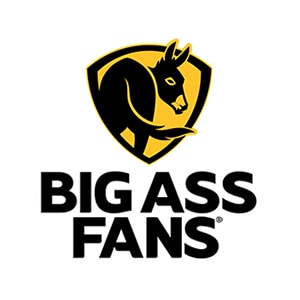B2B marketing has a reputation for being repetitive, lackluster, and unimaginative. In other words – boring. We’ve got some sad news. That reputation is often well deserved.
Some have even sunk to calling it “B to boring” marketing. (I know… it’s cheesy. We don’t take credit for the joke, but it makes a point.)
This is a problem outside just the obvious negative effects of being labeled uninteresting.
An undifferentiated or engaging voice has a lot of drawbacks – lower engagement rates, leading to lower conversion rates, resulting in a depleted sales funnel.
In short, unengaging and undifferentiated creative doesn’t just lead to subpar marketing, it hurts your bottom line,
The good news is marketing in the B2B sector does have to be boring. The better news is that, if you kick up your creative a notch, you can stand out even more in a sea of copycat marketing.
Any company can kick-start its internal team or partner with a B2B marketing agency to create an attention-grabbing and memory-making persona.
But how?
The rest of this article is dedicated to answering that question and why B2B marketing got its less than exciting reputation in the first place.
We will examine how you can leverage voice, market positioning, and branding to improve your marketing and stand out in the B2B crowd.
Why is B2B marketing uninteresting?
The answer here comes clear if you examine some of the biggest mistakes many B2B companies insist on repeating.
B2B forgets that marketing is always about people.
It’s easy to see B2B prospects as large corporations or businesses – soul-less, purely rational beings.
Don’t get me wrong; your prospects need to defend their decisions rationally to their team and superiors.
But, at the end of the day, their purchasing behavior is just as emotionally driven as any. It’s just in a different context with different emotional needs.
For example, B2B buyers are concerned about safety. As the common expression says, “Nobody ever gets fired for buying IBM”.
If your marketing can make a decision seem like a safe decision with lots of validation, that will make a big difference.
It’s completely okay to speak to their emotions and intellect. In fact, it’s needed.
The truth is it doesn’t matter if your target audience is one person (a CEO) or a buying group; they want to feel sure they’ve found the right solution.
That’s where a more humanized and conversational approach can help.
People trust other people—not a faceless company that cares more about impressing instead of connecting.
B2B businesses sometimes forget that.
B2B Marketers often do and say the same thing.
B2B marketing is a funny thing. It functions in a world this is often quite technical and diverse, yet…
…B2B companies rely on the same boring marketing message: typically, an onslaught of data and messages that could be C&P to any competitor.
“World-class team/support/etc.”
“We do XYZ, so you don’t have to.”
Phrases like these could apply to a cybersecurity consultant and a plumber equally.
Additionally, B2B businesses think that bombarding their customers with some cold facts and data will somehow win them over.
But here’s the thing: no one wants to be bombarded with facts and data before they even understand the product’s value and how it’s differentiated from the market.
And no one wants to read a dry, boring ad with little context.
Don’t get us wrong. Stats, pricing pages, and product specs are very important parts of B2B marketing.
They just aren’t the only part and should be leveraged when it makes sense in the buyer’s journey. You need to know what value to provide and when.
Not every prospect is ready to receive a barrage of jargon and sales pitches, leading us to the next mistake we’ve seen some make.
B2B marketers don’t offer the right value at the right funnel stage.
There are many different ways to view the marketing/sales funnel, but we will use the AIDA funnel — Awareness, Interest, Decision, and Action.
Where many B2B miss the mark is understanding what mindset their prospects are in at different stages of the funnel and communicating accordingly.
All or most of your messaging is focused on sales. You want a lead or someone who is ready to buy.
While you do want to generate sales, your marketing won’t resonate or create interest if all the messaging is end-of-funnel.
In other words, most of your potential customers aren’t ready to close the minute they find you through an ad or google search.
So, don’t try to sell your company hard right then. You’ll come across as like every other B2B business or, even worse, annoying.
Put yourself in their shoes and provide value for each mindset your prospect is in at the time.
Learn more about leveraging the AIDA funnel from this article here by our Marketing Manager, Colin Costigan.
The Cure
With all this in mind, here are three ways you can improve their B2B marketing functions and avoid being labeled as “boring.”
Find your unique voice.
Examples can be one the best ways to learn. They can be one of the best ways to cement new information in your brain.
Want to see an example of a unique and entertaining voice in action?
Enter Big Ass Fans.

Big Ass Fans started back in 1999. These good people called their company HVLS Fans.
Catchy, right?
Not exactly, but their original name did make sense. HVLS stands for high-volume, low speed. With that name, all their customers would be educated on exactly what their product does and its key features.
Customers thought a little differently. They just kept asking about “those big ass fans.”
HVLS Fans listened to their customers, and BAM, their new name was born. Since then, BAF has enjoyed impressive growth and gained a loyal customer/fan base.
Why?
Their name and branding are unique, so they target a specific audience. The personality and values become clear immediately—they’re accessible, relatable, clear, and honest.
BAF is just selling fans and being themselves, and they make you feel like you can be yourself when interacting with them and purchasing their products.
Most importantly, they seem like real people selling to real people.
Now, they are one of the leaders in their industry.
The lesson here is to find a way to reach your target audience in a way that makes you stand out and keeps them engaged.
Craft buyer personas and try surveying your current customer. You might learn a thing or two or even find a new name.
Position, position, position
If voice is how you say something in B2B marketing, then positioning is where you sit in the market.
The Economic Times says positioning “defines where your product (item or service) stands in relation to others offering similar products and services in the marketplace as well as the mind of the consumer.”
Your ability to clearly articulate where your company sits in the market and how you stand out in the market is critical to standing out. The more differentiated position you take in the market, the less competition you have.
How does it work?
Let’s think through a hypothetical example.
If you’re an MSP, you don’t want to go around saying you can provide any support and services for any company that asks.
While it feels like being broad opens up your market, in reality, it leads to being lost among the better-positioned competition. You lose your edge.
In response, many MSPs will then try and differentiate themselves by saying they have the most experienced team and take a strategic approach to IT, unlike “those other guys.” Unfortunately, that’s what all MSPs say.
Instead, an MSP exclusively serves doctor’s offices with 50-100 workstations.
When competing within that niche, that MSP will get chosen over the broad competitor every single time.
It’s not just a marketing ploy; they actually deliver better services due to the niche. They know the systems, the end-user needs, compliance requirements, etc.
A company that says they do everything for everyone ends up doing little for anyone.
Now, we’ll move on from voice and position to branding.
Brand for best results
A brand is more than just a logo or mission statement. It’s a customer’s gut feeling about a product, service, or company. It’s the equivalent of a first impression, and it’s critical to get it right.
And getting that right in B2B marketing can be difficult.
After all, you’re simplifying all the complex elements that make up your business into a handful of visuals or phrases. No pressure, right?
Companies like Slack, MailChimp, and Monday.com are great examples of companies doing it right.
Market research, introspection, goal specification, and audience analysis are key to success.
By taking the time to understand your audience and what makes your company unique, you can create a brand that resonates with customers and sets you apart from the competition.
So don’t underestimate the power of branding in B2B marketing – it could be the difference between an engaging and memorable impression or a vague and short interaction.
Branding isn’t the “soft” side of marketing. It’s the it-factor that makes the rest of your marketing efforts work.
Go forth and bore no more.
So, are you ready to make your B2B marketing sizzle instead of fizzle? It’s challenging but 100% worth the work.
Don’t struggle alone.
With New North’s help, you can easily escape the generic, tasteless B2B marketing that pervades many businesses today.
Let us show you how to create an irresistible brand that stands out from the competition and drives sales like never before. We’ve done for dozens of others, and we’d love to for you.






